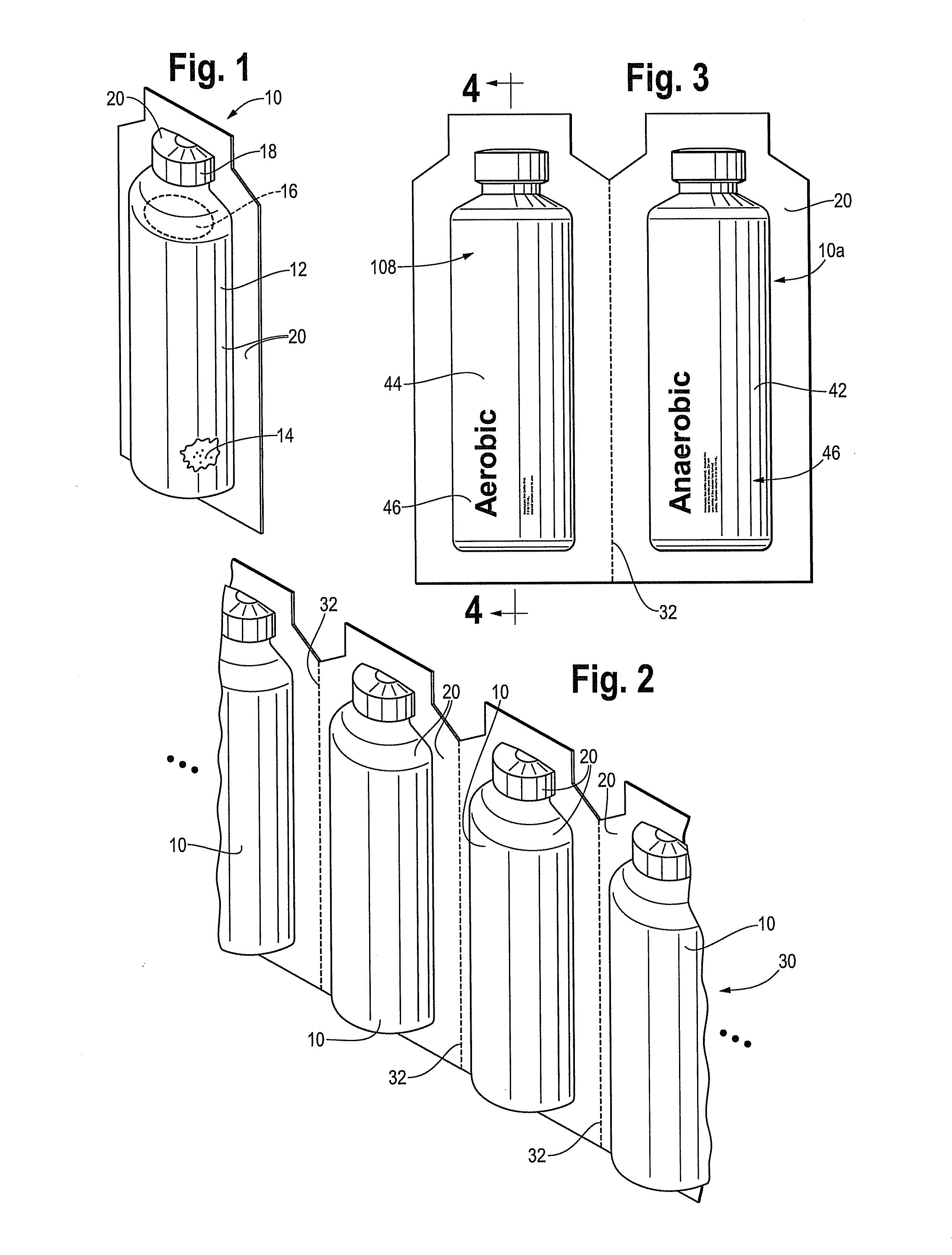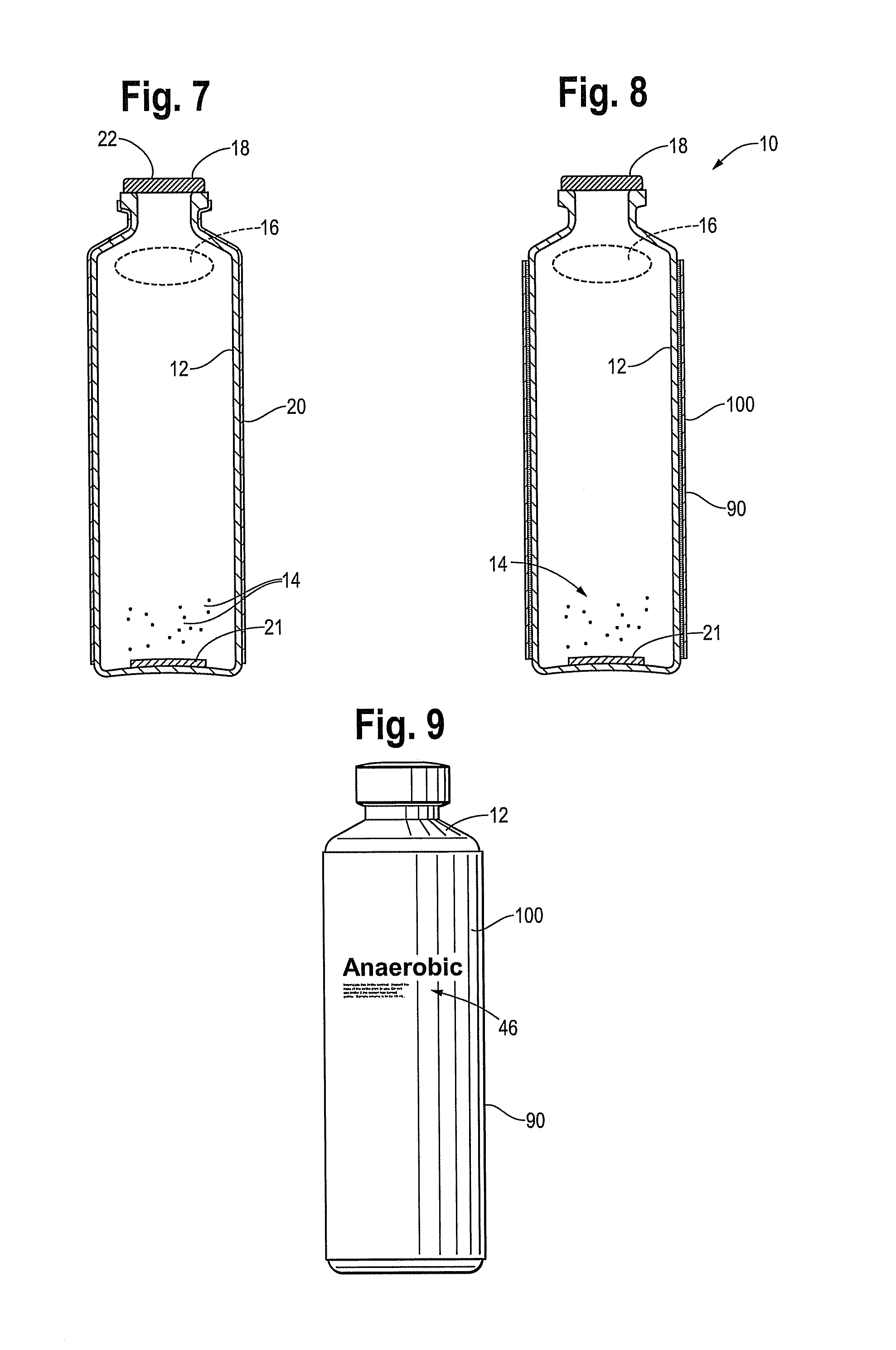Single layer plastic test sample culture bottle
a single-layer, plastic technology, applied in the field of bottles, can solve the problems of bottle bursting, glass shards and biologically hazardous materials, glass has inherent safety risks, etc., and achieves the effects of reducing the manufacturing complexity of multi-layer vials, and reducing the risk of bottle bursting
- Summary
- Abstract
- Description
- Claims
- Application Information
AI Technical Summary
Benefits of technology
Problems solved by technology
Method used
Image
Examples
Embodiment Construction
[0030]The following description will refer to a preferred embodiment of a culture bottle adapted for culturing a blood sample. However, the features and benefits of the disclosed embodiment are applicable to bottles for culturing clinical and non-clinical test samples generally, therefore the following description is offered by way of example and not limitation. All questions concerning scope of the invention should be answered by reference to the appended claims.
[0031]FIG. 1 is a perspective view of a blood culture device 10 in accordance with this disclosure. The device includes a plastic vessel or bottle 12 which is made from a single layer of plastic material. The plastic material used to form vessel or bottle 12 preferably meets two requirements: unaffected by high temperatures occurring during autoclaving, and light transmittance (bottle is made from a transparent material) in order for reading of a colorimetric sensor in the bottle. Preferred embodiments use blow molding for ...
PUM
 Login to View More
Login to View More Abstract
Description
Claims
Application Information
 Login to View More
Login to View More - R&D
- Intellectual Property
- Life Sciences
- Materials
- Tech Scout
- Unparalleled Data Quality
- Higher Quality Content
- 60% Fewer Hallucinations
Browse by: Latest US Patents, China's latest patents, Technical Efficacy Thesaurus, Application Domain, Technology Topic, Popular Technical Reports.
© 2025 PatSnap. All rights reserved.Legal|Privacy policy|Modern Slavery Act Transparency Statement|Sitemap|About US| Contact US: help@patsnap.com



